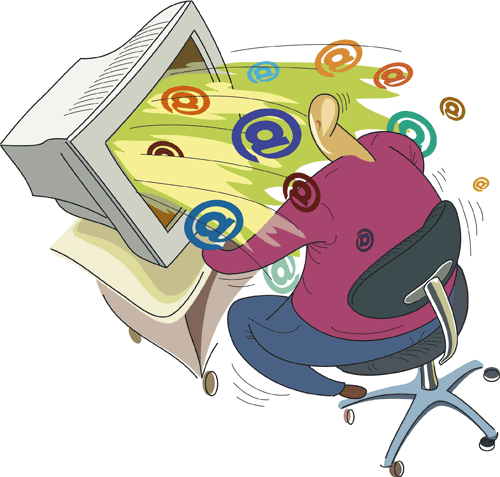I Was Spammed By A Dead Man
I visited my spam folder yesterday. We all know what’s in there: Missives from Siberian billionaires, Midwestern housewives lost in the Congo, penis prognosticators. Third-world hucksters, clicking their way into our consciousness.
And, near the top, an e-mail from a friend who died last June. From the MiFi connected to his laptop six feet underground in Illinois, he was asking me for a $52.3 million wire transfer via Western Union.
This is not new. Like maggots, malware and spambots turn our formerly active e-mail accounts into economic opportunity, harvesting the potential energy of our hundreds of e-mail contacts to sell Viagra and Cialis. And it works. .01 percent of people fall for the ads, and pay. Given the 1.7 million spam messages sent each day, that’s thousands of victims each week, and over $200,000 in monthly revenue.
Today, spam amounts to eighty-five percent of daily e-mails. Thick oceans of spam, washing over our inboxes.
MEGA QUARTZ WINNER!! Dear prospective claimant, HOW TO BE IRRESISTIBLE TO WOMMEN – SEXUALLY TWO DAYS OF GREAT SEX FOR UNDER $5 AND HUGE NATURAL b00bS. WANT A ONE N!GHT STAND? JUST SIGN UP AND UNDERSATD THAT YOUR LIFE WAS ***SUZZXXXXXX** BEFORE! DO YOU WANT YOUR DICK TO BE IN MILLION OF WOMMENS SCREENSAVERS?
In 1864, America received spam for the first time—a series of dubious investment offers—via telegraph lines. Gary Turk, the father of e-mail spam, sent the first unsolicited computerized message in 1978, to four hundred recipients. He was told not to do it again. He did it again. Unsolicited e-mails rose through the eighties and nineties, though it wasn’t until 1993 that people started to call them “spam.” There’s a Monty Python sketch in which a band of Vikings sings the word “spam” endlessly, and that’s how it got its name.
Much of the world’s spam comes from robots on Pitcairn Island, a lush drop of humanity in the middle of the South Pacific Ocean. Most people don’t know this; they assume it comes from China, or from America’s underclass. I’ve always imagined spam in a kind of Oliver Twist scenario, where a man who looks like Fagin pays young spammers with food, shelter, and tricks.
But no. Or at least not exactly yes. Fifty-six people live on Pitcairn, and all of their computers are infected by malware. A tropical spam factory. Per capita, the island produces the most spam in the world, by far. Pitcairn was originally settled by British sailors who literally threw their captain from the ship. They couldn’t part with the wine-blue waters and the women of nearby Tahiti. So they mutinied and settled there in 1789, hearty and romantic, eating sweet potatoes and wahoo and breeding babies who would one day send unwanted advertisements to the rest of the landlocked world.
They wanted beauty, they wanted sex, they wanted huge natural boobs and one-night stands and fish with scales reflecting the sun.
And they got it.
So my friend died, and here he was. A thin rectangle at the top of my web browser. Where else do dead people go except in the spam folder, sending us hopeful pleas at odd hours, burrowing in the back of our consciousness, and trying to reach us in bold, exuberant, sometimes unwelcome display?
Spam is hope. Quixotic hope, sure, but hope nonetheless. Undiluted and true. The raw desire for the things we all want but cannot have, because we don’t believe hard enough. The textual cries of the most ambitious motherfuckers on this side of the Milky Way.
When you die, your email account will be overtaken by spambots and each of your friends will receive posthumous penis enlargement links. Meditate on your legacy. ![]()
Check out Harris Sockel’s new Thought Catalog book here.
This post originally appeared at Medium.






